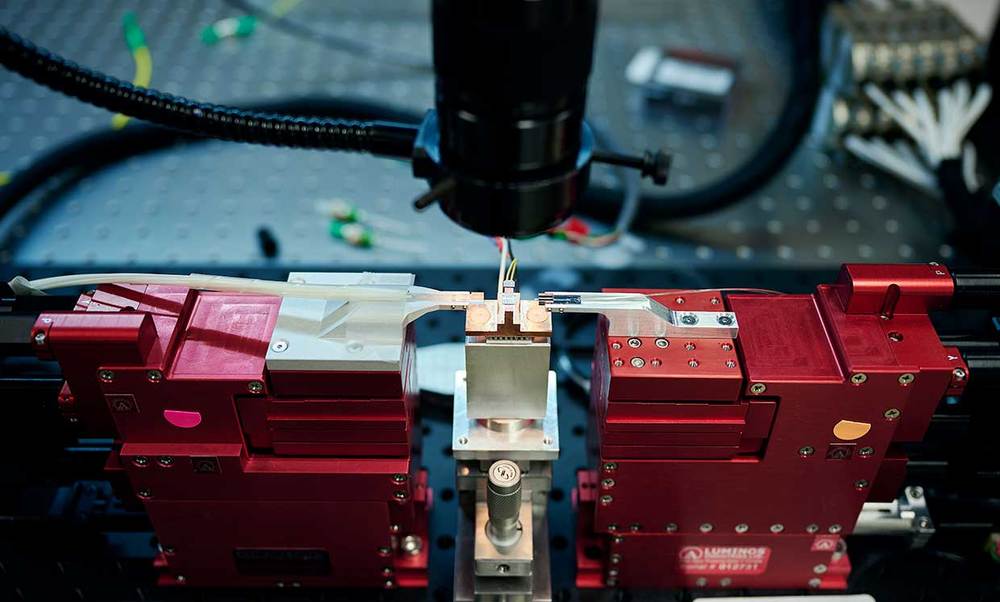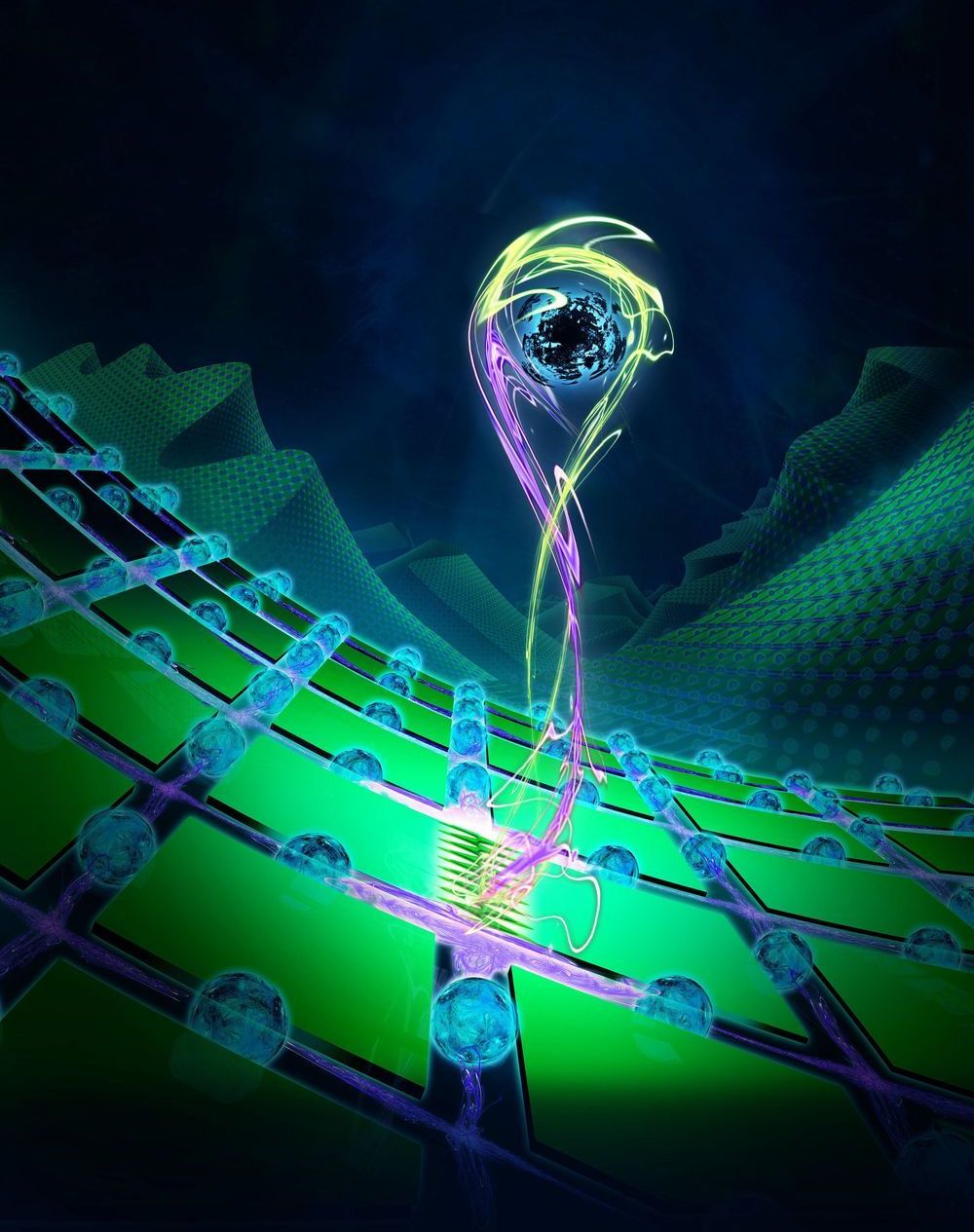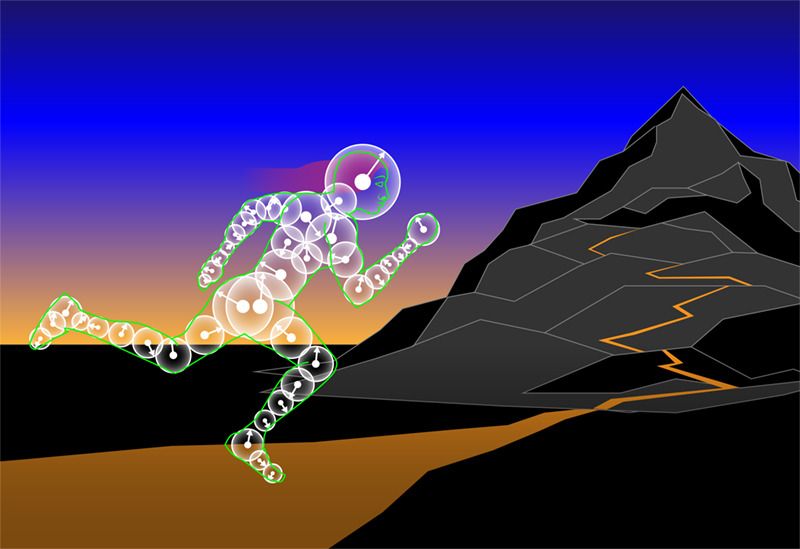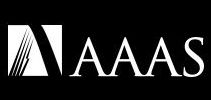First photonic quantum computer on the cloud.



Even quantum computers make mistakes. Their computing ability is extraordinary, exceeding that of classical computers by far. This is because circuits in quantum computers are based on qubits that can represent not only zeroes or ones, but also superpositions of both states by using the principles of quantum mechanics. Despite their great potential, qubits are extremely fragile and prone to errors due to the interactions with the external environment.
To solve this crucial issue, an international research group developed and implemented a new protocol that protects fragile quantum information and corrects errors due to qubit loss. This research group published the results of their study in Nature.
“Developing a fully functioning quantum processor still represents a great challenge for scientists across the world,” explains Davide Vodola who is one of the authors of the study as well as a researcher at the University of Bologna. “This research allowed us, for the first time, to implement a protocol that can detect and, at the same time, correct errors due to qubit loss. This ability could prove to be essential for the future development of large-scale quantum computers.”
Circa 2015. What if a hull of ship could have warp crystals that could slip through space time easier.
Crystals, as quantum objects typically much larger than their lattice spacing, are a counterexample to a frequent prejudice that quantum effects should not be pronounced at macroscopic distances. We propose that the Einstein theory of gravity only describes a fluid phase and that a phase transition of crystallization can occur under extreme conditions such as those inside the black hole. Such a crystal phase with lattice spacing of the order of the Planck length offers a natural mechanism for pronounced quantum-gravity effects at distances much larger than the Planck length. A resolution of the black-hole information paradox is proposed, according to which all information is stored in a crystal-phase remnant with size and mass much above the Planck scale.

Future wireless networks of the 6th generation (6G) will consist of a multitude of small radio cells that need to be connected by broadband communication links. In this context, wireless transmission at THz frequencies represents a particularly attractive and flexible solution. Researchers at Karlsruhe Institute of Technology (KIT) have now developed a novel concept for low-cost terahertz receivers that consist of a single diode in combination with a dedicated signal processing technique. In a proof-of-concept experiment, the team demonstrated transmission at a data rate of 115 Gbit/s and a carrier frequency of 0.3 THz over a distance of 110 meters. The results are reported in Nature Photonics.
5G will be followed by 6G: The sixth generation of mobile communications promises even higher data rates, shorter latency, and strongly increased densities of terminal devices, while exploiting Artificial Intelligence (AI) to control devices or autonomous vehicles in the Internet-of-Things era. “To simultaneously serve as many users as possible and to transmit data at utmost speed, future wireless networks will consist of a large number of small radio cells,” explains Professor Christian Koos, who works on 6G technologies at KIT together with his colleague Professor Sebastian Randel. In these radio cells, distances are short such that high data rates can be transmitted with minimum energy consumption and low electromagnetic immission. The associated base stations will be compact and can easily be mounted to building facades or street lights.
To form a powerful and flexible network, these base stations need to be connected by high-speed wireless links that offer data rates of tens or even hundreds of gigabits per second (Gbit/s). This may be accomplished by terahertz carrier waves, which occupy the frequency range between microwaves and infrared light waves. However, terahertz receivers are still rather complex and expensive and often represent the bandwidht bottleneck of the entire link. In cooperation with Virginia Diodes (VDI) in Charlottesville, U.S., researchers of KIT’s Institute of Photonics and Quantum Electronics (IPQ), Institute of Microstructure Technology (IMT), and Institute for Beam Physics and Technology (IBPT) have now demonstrated a particularly simple inexpensive receiver for terahertz signals. The concept is presented in Nature Photonics.

Emerging quantum materials can be defined by topology and strong electron correlations, although their applications in experimental systems are relatively limited. Weyl semimetals incorporating magnetism offer a unique and fertile platform to explore emerging phenomena in developing topological matter and topological spintronics. The triangular antiferromagnet Mn3Sn exhibits many exotic physical properties as an antiferromagnetic (AFM) Weyl semimetal (WSM), including an attractively large spontaneous Hall effect.
The spontaneous Hall effect was discovered more than a century ago and understood in terms of time-reversal symmetry breaking by the internal spin structure of antiferromagnetic, ferromagnetic or skyrmionic (small swirling topological defects in the magnetization) forms.
In a new report now published on Science Advances, Durga Khadka and a team of scientists in physics, materials science, neutron research and engineering in the U.S. reported the synthesis of epitaxial Mn3+x Sn1−x films with compositions similar to bulk samples. When they replaced the tin (Sn) atoms with magnetic manganese (Mn) atoms in the samples, they noted the Kondo effect; a celebrated example of strong correlations to emerge, then develop coherence and induce a hybridization energy gap. The process of magnetic doping and gap opening facilitated rich extraordinary properties for the new materials.

The achievement opens a pathway for development of the first practical and efficient devices to generate and detect light at terahertz wavelengths—between infrared light and microwaves. Such devices could be used in applications as diverse as communications in outer space, cancer detection, and scanning for concealed weapons.
The research could also enable exploration of the basic physics of matter at infinitesimally small scales and help usher in an era of quantum metamaterials, whose structures are engineered at atomic dimensions.

The cosmos was born in a churning fluid 300 million times hotter than the sun. We’ve recreated this hell, and it’s not just hot, it is also very, very strange, says Amanda Gefter (science writer based in London). TO LOOK deep into the fundamental structure of matter is to look billions of years back in time, to the moment when matter first blinked into being. Recreating the conditions of that moment has long been an aim for physicists wanting to understand how the universe evolved from the cosmic fireball that existed a fraction of a second after the big bang. Now researchers at the Relativistic Heavy Ion Collider (RHIC) at Brookhaven National Laboratory in Upton, New York, have, almost certainly, finally recreated the moments after creation. By colliding nuclei together at enormous speeds, RHIC experimenters were able to break down the structure of nuclear matter. This resulted, most experts agree, in the formation of a long-sought-after plasma that is believed to be the primal stuff of the cosmos, the state of matter at the beginning of time. It turns out, though, that the nature of matter is inextricably tied to the vacuum in which it resides. And the RHIC experiments have thrown up some surprises. They seem to show that the vacuum is a richer and more complicated place than was previously imagined. They suggest the boundary between something and nothing is more blurred than experts had predicted. The stuff made at RHIC is a plasma consisting of quarks and gluons, the most basic building blocks of everything we see around us. Quarks combine in threes to form the protons and neutrons that comprise the nucleus of every atom. But while we can observe a single proton or neutron, we cannot observe a single quark. Quarks are perpetually confined to group living. In fact, the harder you try to pull quarks apart, the stronger the force between them becomes. This is part of the theory of quantum chromodynamics (QCD), which describes how the force between the quarks is carried by the massless gluons.
In QCD, it is the vacuum that imprisons the quarks. While it may sound like a barren place, the vacuum of QCD is a complex, dynamic arena. It writhes with virtual particles that appear in pairs, then annihilate and disappear again. It is haunted by strange creatures of various kinds, too, topologically complex knots and twists that are relatives of wormholes, places where space turns in on itself and seems treacherous. These knots and twists carve out paths for the gluons to travel along, thereby keeping the quarks together. These strange ideas have credence because of the success of QCD in predicting the reactions of fundamental particles. The only way to unglue quarks is to “melt” the vacuum between them. But the vacuum doesn’t give in easily. To raze its jagged terrain requires enormous amounts of concentrated energy, found only in powerful nuclear collisions, or the fireball at the earliest moments of time.

The concept of quantum communication, with security guaranteed by the laws of physics, took the worl.
If you do not yet have an account, please register so you can.

Scientists from Regensburg and Zurich have found a fascinating way to push an atom with controlled forces so quickly that they can choreograph the motion of a single molecule within less than a trillionth of a second. The extremely sharp needle of their unique ultrafast microscope serves as the technical basis: It carefully scans molecules, similar to a record player. Physicists at the University of Regensburg now showed that shining light pulses onto this needle can transform it into an ultrafast “atomic hand.” This allows molecules to be steered—and new technologies can be inspired.
Atoms and molecules are the constituents of virtually all matter that surrounds us. Interacting with each other according to the rules of quantum mechanics, they form complex systems with an infinite variety of functions. To examine chemical reactions, biological processes in a cell, or new ways of solar energy harvesting, scientists would love to not only observe individual molecules, but even control them.
Most intuitively, people learn by haptic exploration, such as pushing, pulling, or tapping. Naturally, we are used to macroscopic objects that we can directly touch, squeeze or nudge by exerting forces. Similarly, atoms and molecules interact via forces, but these forces are extreme in multiple respects. First, the forces acting between atoms and molecules occur at extremely small lengths. In fact, these objects are so small that a special length scale has been introduced to measure them: 1 Ångström (1Å = 0.000,000,000,1 m). Second, at the same time, atoms and molecules move and wiggle around extremely fast. In fact, their motion takes place faster than picoseconds (1 ps = 0.000,000,000,001 s). Hence, to directly steer a molecule during its motion, a tool is required to generate ultrafast forces at the atomic scale.